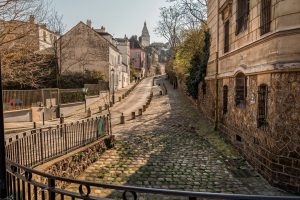A city over two thousand years old, Paris underwent massive transformations in the 19th century.
Unfortunately, this evolution erased much of the medieval heritage of the capital. But don’t worry — not everything has vanished! In the Marais district, a few rare (but magnificent) remains still bear witness to Paris’s rich medieval past. From the oldest house in the city to the last remaining medieval cloister, not to mention a 12th-century military wall, come along for a walk through medieval Paris.
Starting point: Saint-Paul metro station (line 1).
Take Rue du Prévôt. This long, narrow, and dim alley, with a central gutter, is a perfect example of what streets looked like in medieval Paris — with the level of hygiene you can easily imagine…
At the end of the street, turn left onto Rue Charlemagne and continue straight ahead until you spot, on your right, a large section of medieval wall: the Philippe Auguste Wall.
Built at the end of the 12th century to protect Paris while King Philippe Auguste was away on a crusade, this military fortification has left more visible traces than any other in the city. The section you see here, measuring 80 meters, is the longest surviving stretch.
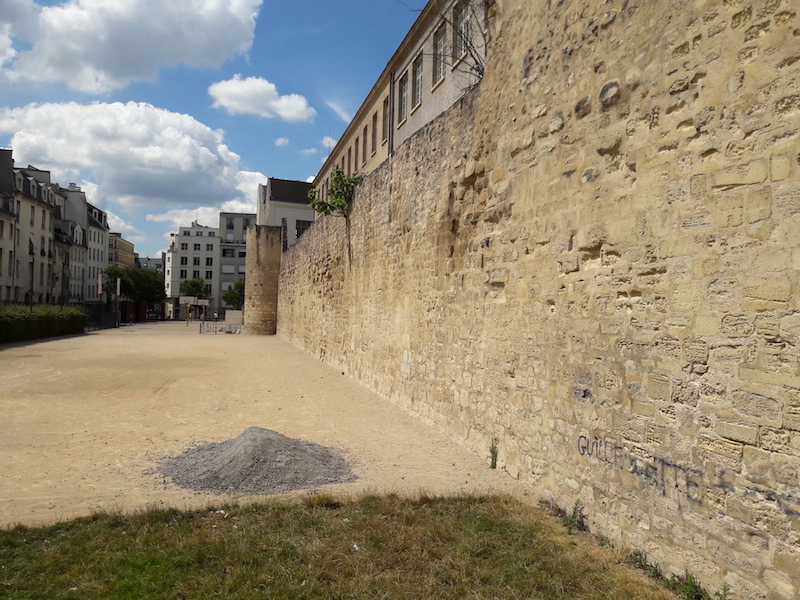
The Philippe Auguste Wall originally stretched for 5 kilometers — 2.5 km on the Right Bank and 2.5 km on the Left Bank.
It had a major influence on the development of Paris, as it enclosed Les Halles within the city limits, making the Right Bank the center of trade and bourgeois life, while on the Left Bank, it encompassed the University, establishing that area as the intellectual and student heart of the city — two characteristics that have endured through the centuries.
Retrace your steps on Rue Charlemagne and turn left onto Rue du Fauconnier.
At the end of the street, you’ll see a magnificent building from the end of the medieval period: the Hôtel de Sens.
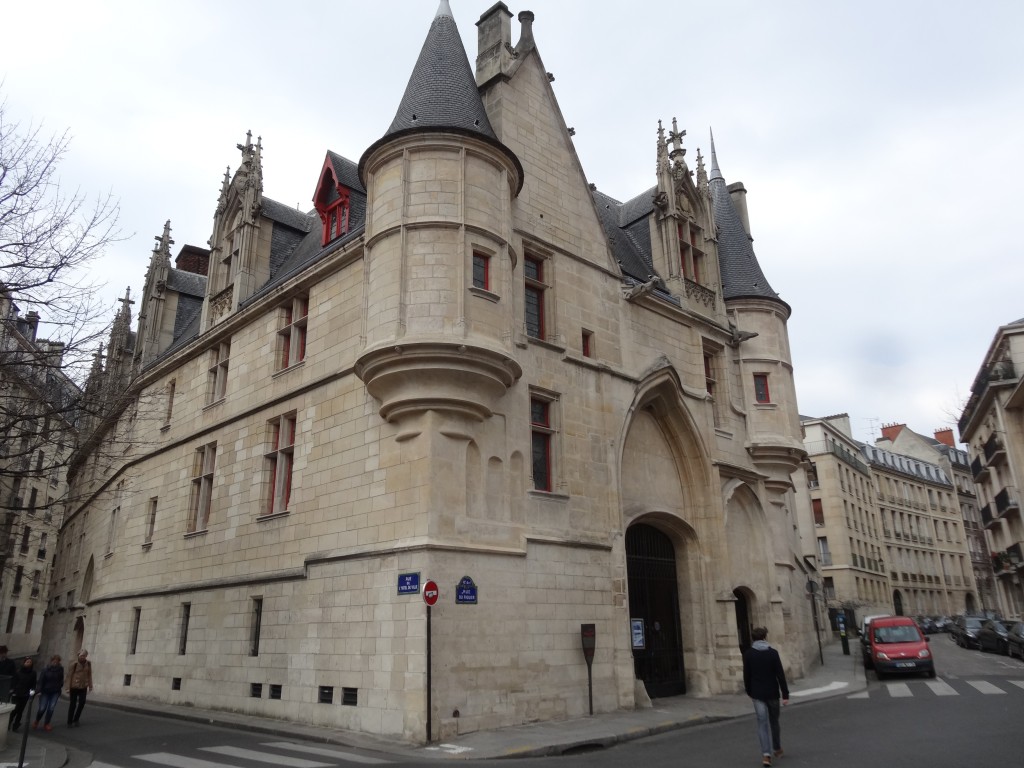
This was once the residence of the Archbishops of Sens, powerful advisers to the king. The building was completed in the 16th century. It underwent significant renovations in the early 20th century after the City of Paris purchased it to turn it into a specialized library.
Look up at the top of the building: you’ll spot a black ball with a date — February 29, 1830. It’s a cannonball, a leftover from the July Revolution of 1830.
Continue on Rue du Figuier, then turn left onto Rue de Jouy.
Keep going until you reach 11 and 13 Rue François Miron, where you’ll find two medieval houses dating from the early 16th century — likely from the time of Louis XII or Francis I. These buildings were restored in the 20th century as part of a campaign to recover Paris’s rare medieval heritage after the widespread demolitions and renovations of the Haussmann era.
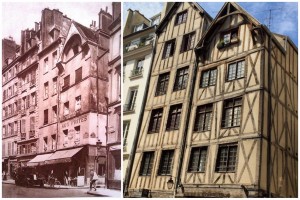
Keep walking straight until you reach the back of Paris City Hall, the center of the city’s administration since the 15th century. Turn right and take Rue des Archives.
At 24 Rue des Archives, you’ll find the Cloître des Billettes, the only surviving medieval cloister in Paris. Unfortunately, it’s not open every day… However, exhibitions are often held there, allowing you to visit for free.
Farther along, at 40 Rue des Archives, stands the so-called House of Jacques Coeur. A wealthy 15th-century merchant, Jacques Coeur was one of the richest men of the Middle Ages. The house you see today has been heavily altered and reduced over time.
Keep walking until you reach 58 Rue des Archives. Here, integrated into the Hôtel de Soubise, now home to the National Archives, you’ll see the only surviving element of the former Hôtel de Clisson, built in the 14th century by Constable Olivier de Clisson. In 1553, it was purchased by François de Lorraine, Duke of Guise, and became the headquarters of the Catholic League during the Wars of Religion.
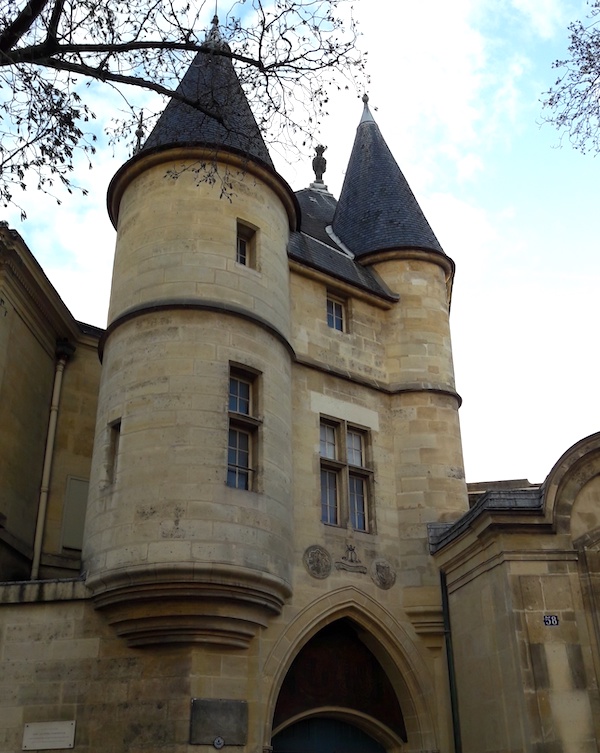
And now, a bit of a walk to the final — and perhaps most exciting — stop: the oldest house in Paris!
To get there, head to 51 Rue de Montmorency (continue straight on Rue des Archives, turn left on Rue des Haudriettes, then right on Rue du Temple, and finally left on Rue de Montmorency).
Listed as a historic monument since 1911, this house was commissioned by Nicolas Flamel after the death of his wife Pernelle in 1397. It was intended to provide shelter for the poor in exchange for daily prayers — as explained in the Old French inscriptions still visible on the beautifully carved stone façade.

Nicolas Flamel is best known for the legend that surrounds him.
According to myth, he succeeded in creating the Philosopher’s Stone — a substance said to turn metals into gold and grant immortality.
History, however, suggests a more down-to-earth version: Nicolas simply inherited his wife’s fortune.
Less spectacular, perhaps — but far more likely!


